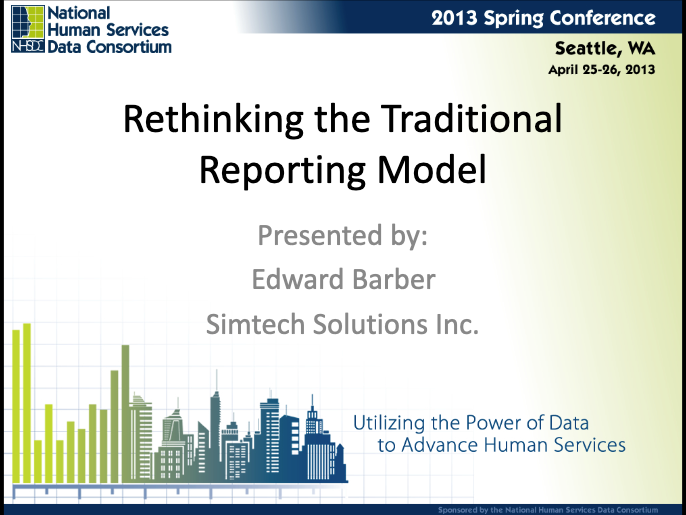Rapid Deployment of a Homeless Response Framework
Presented at: NHSDC
Presented on: 10/11/2017
The communities of Houston and Corpus Christi quickly designed, developed, and implemented a technical framework to support the Hurricane Harvey relief efforts. This presentation included an overview on the challenges that were faced, followed by a discussion of how a services-oriented architecture (SOA) and integration with HMIS was leveraged to maximize the use of data to target the response. Attendees were provided with a blueprint for how they might also respond to natural disasters, or other crises in their communities, using an integrated mix of open source and proprietary technologies.
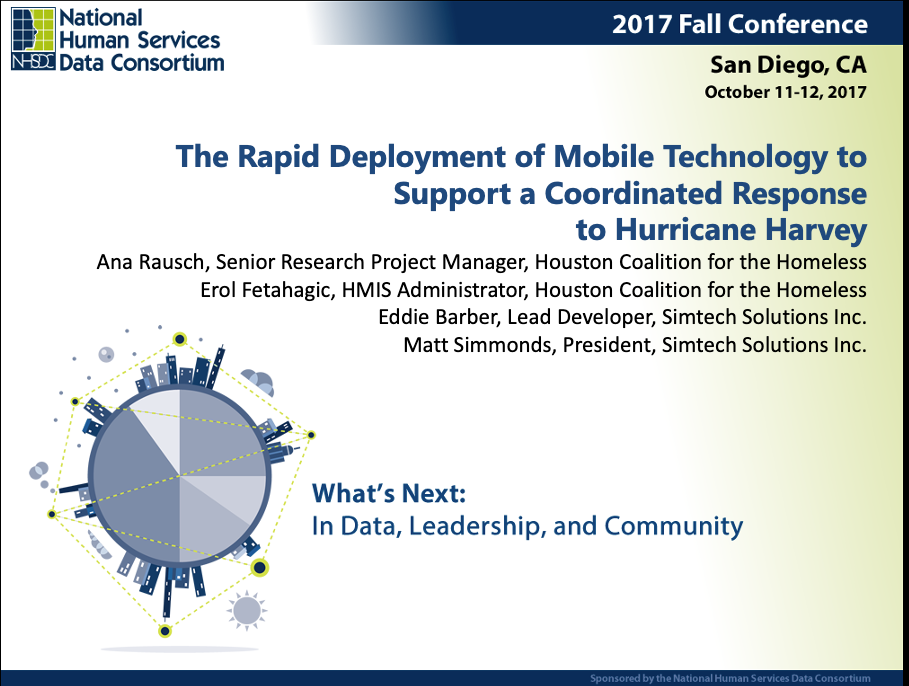
Tools and Techniques for Conducting Reliable Point in Time Counts in Large Areas
Presented at: NHSDC Conference, Salt Lake City, UT
Presented on: 04/24/2017
Coordinating accurate PIT count is a challenge even for small regions. Both Connecticut and San Antonio used paper-based counts but moved to mobile tech and dashboards. San Antonio conducted a blitz count with full canvassing while Connecticut used geographic-sampling. We will show how geospatial survey data collected with mobile devices along with GIS and reporting tools is superior to paper. We will cover the pre-count planning process, review statistical analysis required for sampling, logic used for CoC and statewide estimates, post count clean-up, and lessons learned.
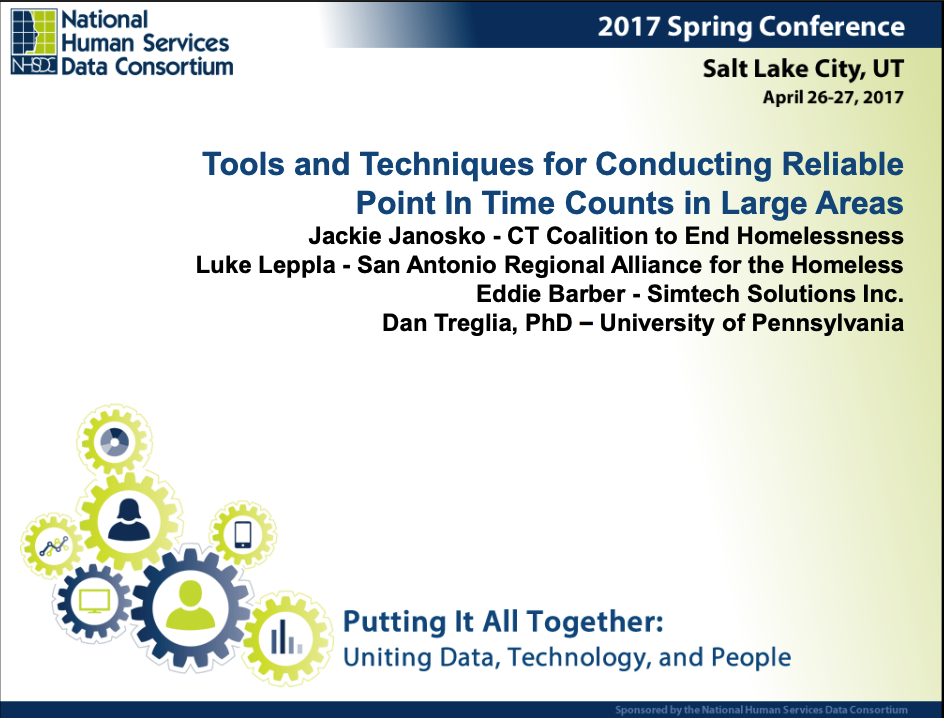
We Have the Results from our System Performance Measures, Now What?
Presented at: NHSDC Conference, Salt Lake City, UT
Presented on: 04/26/2017
During this session, we will provide an overview of how project-level performance measures, using count results culled from APRs and PIT reports, can serve as an effective alternative to large data warehouses that require client consent in order to co-mingle data. We will walk through the process we are taking in Detroit to ensure that the SPM results are valid, share how regional administrators can use project-level performance measures to identify both high and low performing projects, and share the Tableau reports we are using to help Detroit have a better understanding of the efficacy of the various projects in the area.
Detroit, like many regions, understands that HMIS is a treasure trove of information that is waiting to be unlocked. The Detroit CoC has a 96% adaption rate of HMIS and is able to comply with HUD requirements. However, HUD reports do not meet all the needs of various stakeholders in the region including the needs to drive policy, evaluate performance, identify gaps and tell the local stories about homelessness.
System Performance Measures (SPMs) are useful for highlighting areas in the City that are in need of attention but fall short however when it comes time to decide what action steps should be implemented to address the issues. The primary issue is that the results of the SPM reports lack context. Are the numbers an accurate reflection of what is happening in our region? Are the SPM report results good or bad? What projects are making the most significant impact on these SPM figures?
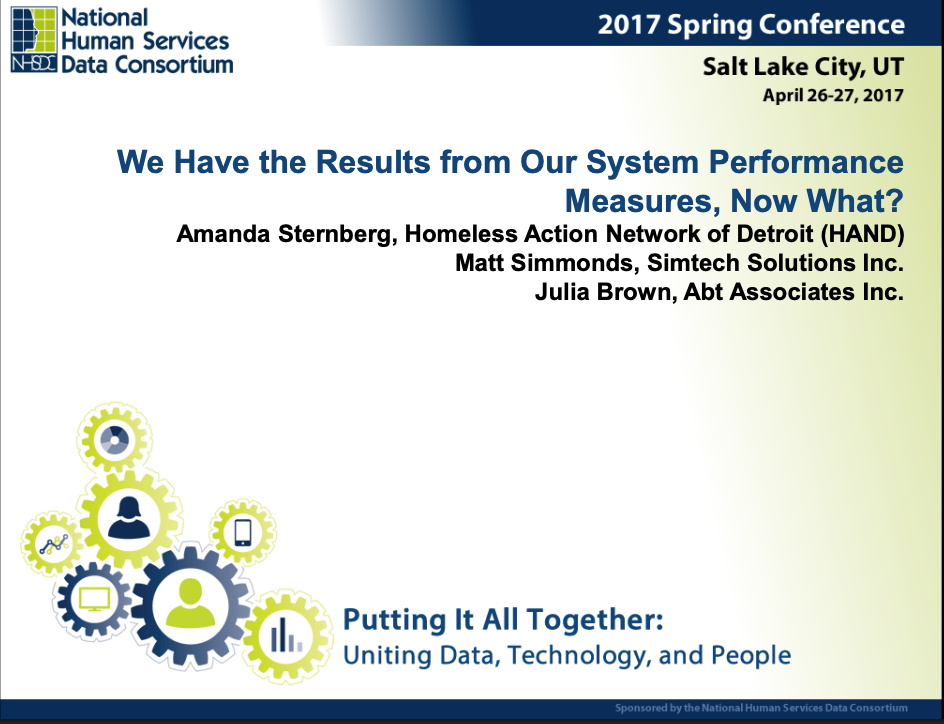
Regional Approached to Coordinated Assessment, Prioritization and Housing Placement
Presented at: CAHP Presentation Denver, CO
Presented on: 04/16/2015
In this session we will share accomplishments, lessons learned, and obstacles that remain for regions that have participated in the 25 Cities, Zero: 2016, and Mayor’s Challenge initiatives. The approaches that have been taken are varied with some deciding to build out their Coordinated Assessment and Housing Placement (CAHP) system directly in HMIS and others choosing to build their coordinated assessment system outside of HMIS. The approaches taken for prioritizing clients for limited housing resources also vary. Chronic homeless status, VI-SPDAT scores, frequency of shelter utilization, and medical vulnerability are all factors that can come into play when deciding which client should be next in line for housing. Housing placement is made stronger and more likely with increased participation and support from Federal partners such as HUD and the VA. We will explain how the CAHP system in Boston was structured to allow for VA participation, discuss the work being done to prioritize and match veterans and the chronically homeless to housing, and cover the development of the pilot CAHP pilot project in the seven-county Denver metropolitan area. The presentation will conclude with a conversation about the work that remains ahead if regions are to be successful in meeting their aggressive goals of ending veteran and chronic homelessness.
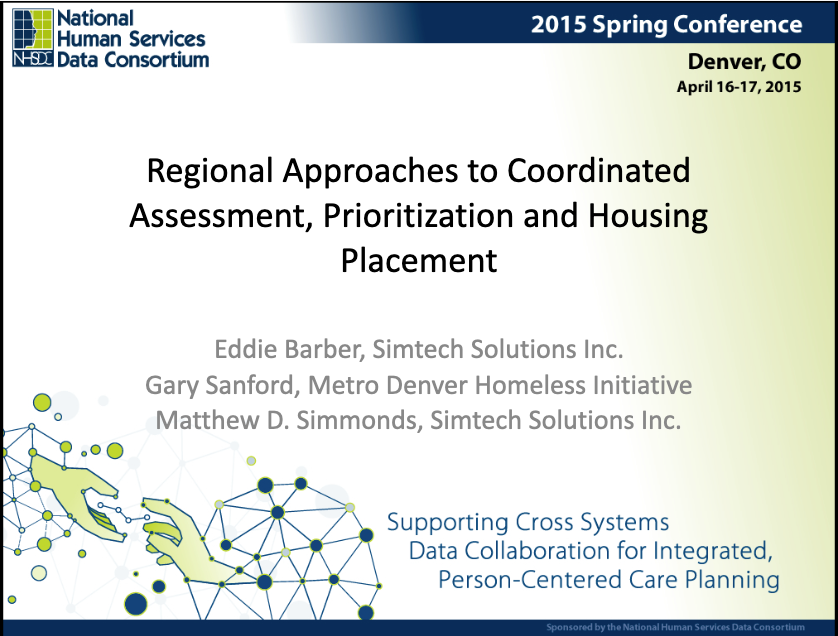
Adopting the HUD Point in Time Mobile App to Assist with Regional Counts
Presented at: NHSDC Conference Arlington, VA
Presented on: 10/10/2013
The annual point in time (PIT) homeless census is an instrumental effort conducted for the purpose of ascertaining the true scope of homelessness both locally and nationally. Results from both the 2011 and 2012 census showed that 38% of all homeless were residing in unsheltered locations. Despite recent advances in technology most regions still rely on paper-based surveys and a manual process for tabulating their street counts. In this session we will share the free “Point In Time Counting Tools” mobile app, discuss the rationale for such a tool, how it can benefit the interaction with clients, share results and user feedback from the beta tests, and provide guidance on how the app can be integrated within regional data collection and reporting processes.
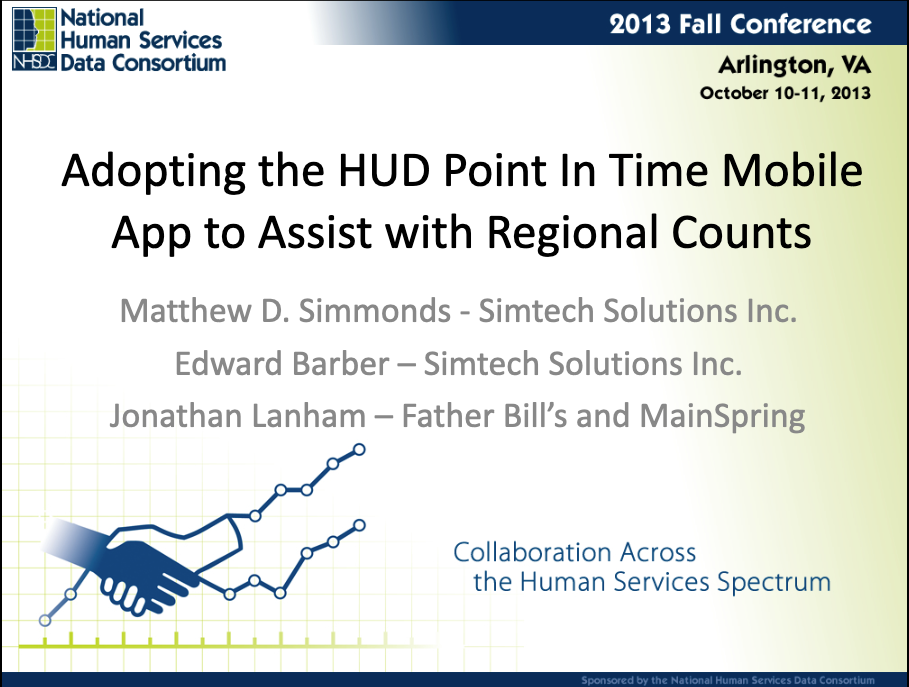
Rethinking the Traditional Reporting Model
Presented at: NHSDC Conference Seattle
Presented on: 04/26/2013
Reporting As A Service (RAAS) is an alternative to the traditional vendor-centric approach. RAAS allows for one set of reporting tools to be developed, tested, and maintained for all to share rather than to have each vendor attempt to perform the process on their own. RAAS can be accomplished via the traditional data warehousing approach, whereby the data is sent to the reporting platform, or can be conducted using the Distributed Reporting Model (DRM) where the tools are sent to wherever the data resides. In this session, the presenter will share examples of how these two approaches have been put into effective use and how, when used in concert with other innovative technologies, they are helping to deliver a heightened level of understanding, accountability, and transparency to the work of ending homelessness.
